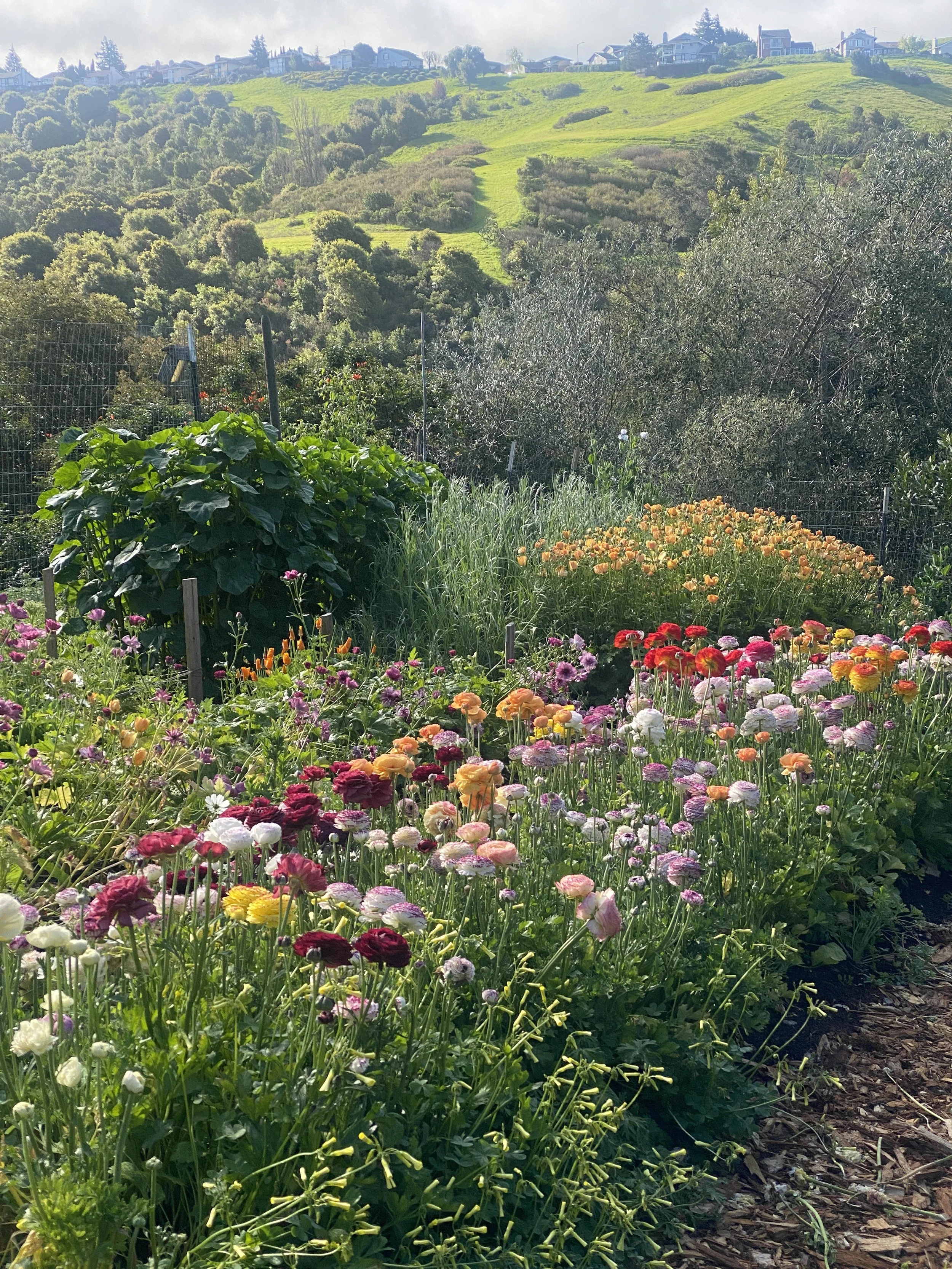Eleanor Lonardo
My flower journey started in 2014 when my husband Ian and I moved from Seattle to Crockett, California. The backyard was large and had no existing plantings. There were a lot of invasive trees giving shade to the majority of the space, but there was a small, enclosed area that looked like a dedicated garden plot. Our first garden there was mostly a disaster; winter brassicas that we planted in May shortly succumbed to aphids and heat. The one crop that flourished was a small planting of Cosmos. It was covered in blooms, unfazed by the weather and withstood our lazy hand-watering methods. I was like, “Well, I think I’d like to grow more flowers”. I started reading more books about our soil, our growing zone, and signing up for online workshops and courses.
I started doing some pop ups, selling bouquets and loose stems, and slowly taking over the 5,000 sq. ft. backyard as growing space for flowers. Fast forward a few years and it became increasingly obvious that I had outgrown our space. Our neighbor had this 6,000 sq. ft. lot that was becoming a weed pit. I asked if I could farm there and she agreed, which was an absolute game changer. Thanks to her kindness, we essentially have a quarter of an acre that we now farm.
In 2021, I had an opportunity to sell through a vendor at The San Francisco Flower Market, which was a huge deal for me. All of these flower farmers that I had met on Instagram were delivering their flowers to the stall every week. Their flowers were all grown on their small farms, and the majority of these farms were women-owned. We all felt really special and it was a magical time.
It didn't take long before I really started to miss those early connections and relationships that I had made with all of my florists and flower shops. In May of 2023 I decided to sell solo to a select group of florists, but couldn’t keep up with the demand. The farmers that I had met through the SFFM were telling me they had these high-demand crops that they were just throwing away, so I stepped in as a liaison between the farms and florists. Driven by this demand and coordination effort, I later sat down with a handful of wonderful farmers and talked about the possibility of starting our own flower collective. We excitedly launched the Golden Coast Flower Collective in March of 2024. We ended our first growing season in Mid-November and the feedback and support has been astonishing. We are excited to get back to our fields, replenish the soil and start our big planting efforts for next spring. It’s going to be amazing.
Show Notes
If you're a florist—or even a flower farmer—participating in a designer workshop can offer valuable insights into the floral design process. This knowledge can guide you in selecting flowers to cultivate more effectively. Being intentional about what you grow is crucial, especially as a small-scale farmer. Observing what other growers cultivate can reveal gaps in the market.
Developing your photography skills is an excellent way to enhance your flower sales. High-quality images truly showcase your stunning products.
When growing Phlox drummondii, pinching is essential for producing longer stems. Although Eleanor doesn't pinch every time, when she does, she ensures to leave several leaves for branching, pinching out the center.
Consider trying Verbascum as a flower option. While it presents some challenges, it can add beautiful dimensions to arrangements, particularly if you sell to event florists or work as a farmer-florist.
When selecting flowers to cultivate, make sure each variety is profitable and "pays its rent."
I was thrilled to learn about Delphinium semibarbatum and Petunia ‘Rainmaster’; I hope you find them as exciting as I do.
Alcalthaea suffructescens was another highlight for me. I believe the variety Eleanor cultivates is ‘Parkfrieden.’ She shared a helpful resource afterward: dutchgrown.com.
Engaging with volunteers can be a fantastic way to connect with your community while offering a rewarding experience for guests. Being well-organized is essential to maximizing this time and ensuring that volunteers feel their contributions are meaningful.
I love Eleanor's mantra: "Everything will get done. It always does." Keep this in mind, especially during this time of year as we wrap up the current season and prepare for spring.

















